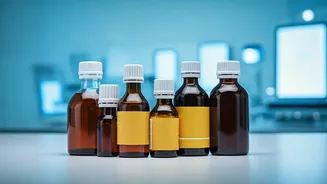ORS: A Lifesaver Explained
Oral Rehydration Solution (ORS) is a critical intervention for treating dehydration, a condition that can be especially dangerous for children. Dehydration
occurs when the body loses fluids and electrolytes faster than they can be replaced. This can result from various causes such as diarrhea, vomiting, or excessive sweating. ORS works by replenishing these lost fluids and electrolytes. It contains a precise balance of salts and sugars that enable the body to absorb water effectively. When a person drinks ORS, the glucose helps the body absorb the sodium, which in turn helps absorb water. The effectiveness of ORS is well-documented, making it a cornerstone in managing dehydration globally, particularly in resource-constrained settings where access to intravenous fluids might be limited. The composition of ORS is critical. The World Health Organization (WHO) and UNICEF recommend a specific formulation, ensuring its safety and efficacy. This formulation, when properly administered, can significantly reduce the severity and duration of dehydration episodes, contributing to improved child health outcomes.
FSSAI's New Directive Unpacked
The Food Safety and Standards Authority of India (FSSAI) plays a pivotal role in ensuring food safety and public health within India. The recent directive issued by FSSAI concerning ORS is a proactive measure to protect children from misleading labeling practices and to ensure access to effective hydration solutions. This directive mandates that only ORS products adhering to WHO-approved formulations can be marketed and sold. This measure is crucial because it addresses the potential for confusion and the risk of consumers selecting ORS products that may not be effective or safe for rehydration. It aims to eliminate products with non-standard compositions that could fail to adequately address dehydration or, worse, potentially cause harm. By enforcing this standard, FSSAI aims to standardize the market for ORS, ensuring that all products meet established safety and efficacy guidelines. This directive aligns with broader public health strategies to reduce childhood mortality and morbidity caused by dehydration. The directive is a significant step towards safeguarding children's health. It underscores the importance of informed consumer choices and the critical role of regulatory bodies in protecting public health.
Identifying Authentic ORS
Distinguishing between authentic and potentially ineffective ORS products is crucial for ensuring the effectiveness of treatment, particularly for children. The FSSAI's directive simplifies this process by ensuring that only WHO-approved formulations are available, reducing the likelihood of encountering substandard products. However, consumers should still be vigilant. The packaging of authentic ORS products will typically display essential information, including the specific composition of electrolytes and sugars, as recommended by WHO. Checking for the WHO endorsement or approval on the packaging can serve as a reliable indicator of product compliance with international standards. Always verify the expiry date on the packaging, as ORS products can lose their effectiveness over time. Avoid products with damaged packaging or those that show signs of tampering. Prepare the ORS solution strictly according to the instructions provided on the packaging, as incorrect preparation can affect its effectiveness. If there is any doubt about a product's authenticity, consulting a healthcare professional is always the best course of action. Following these guidelines helps ensure that the ORS being used is safe and will effectively rehydrate the individual.










